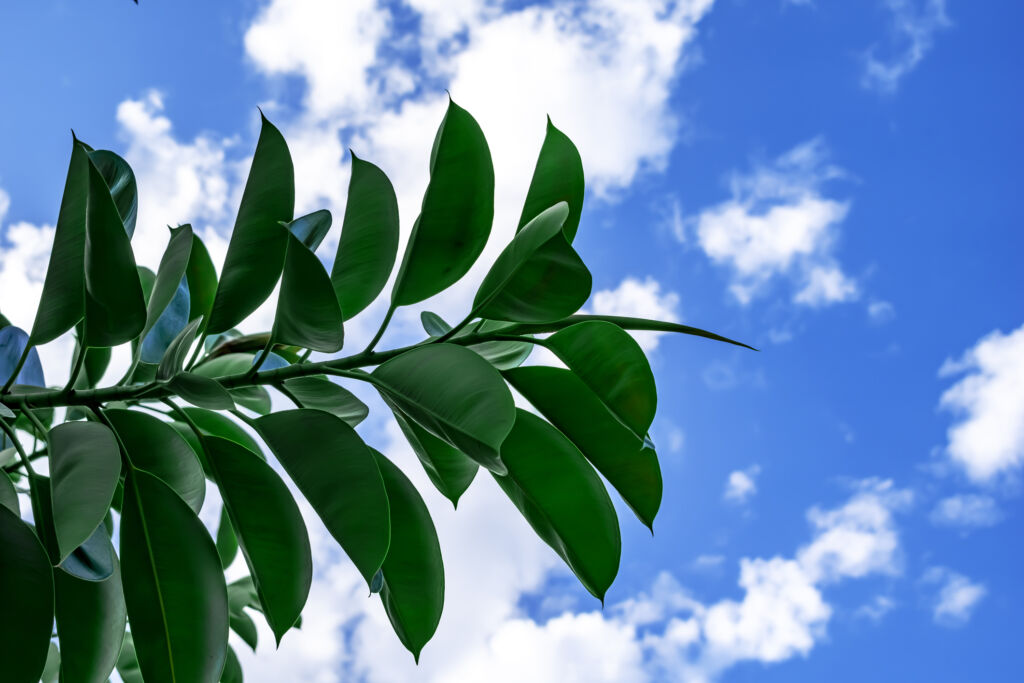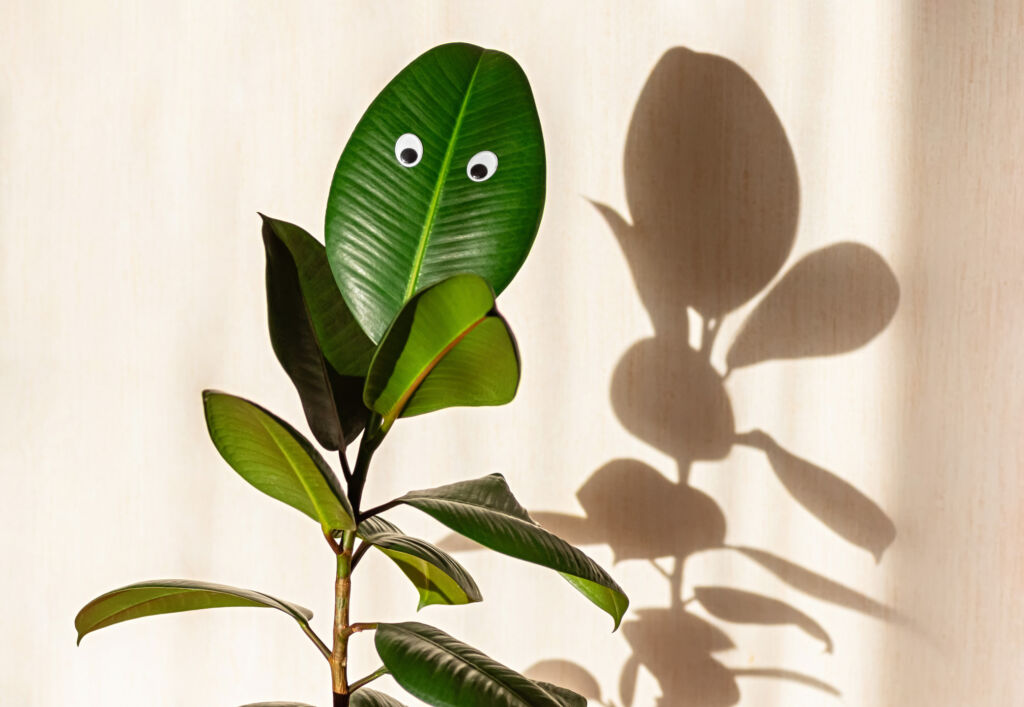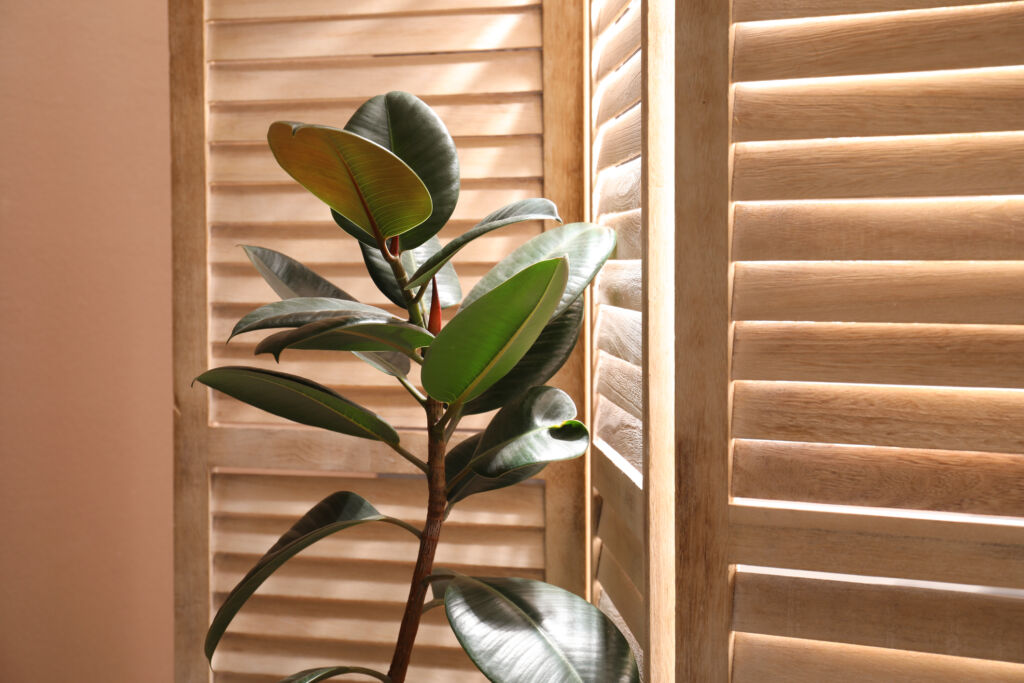HousePlantJoy is supported by our audience. When you purchase through one of our links, we may earn a small affiliate commission. As an Amazon Associate I earn from qualifying purchases. Your cost is not affected.
==================
Remedy For Rubber Tree Leaves Curling
Experiencing Ficus Elastica or rubber tree leaves curling at the edges is common. Many things cause the condition, and they affect the look of our rubber fig plants. It matters to act when this occurs since our Ficus companions can still recover. When the care measures are there, we can make them better. These plants can have large with waxy or attractive foliage through proper care. Hence, we shouldn’t ignore things or give up when we see rubber plant leaves curling.
This post discusses the fixes to leaves curling on rubber plant trees. Included is some information to describe the plant and pointers to make it healthy and happy. Keep reading for tips to enhance the appeal of your Ficus Elastica plant.
When Rubber Tree Leaves Curling Is Normal
You may feel worried about seeing rubber plant leaves curling. Sometimes, there’s nothing to worry about when this happens. When the growth of immature foliage surfaces, it’s typical for the leaves to curl a bit. At some point later, the curving will stop. The leaves will become straight too. When that happens, we can expect them to display their big, sturdy, and glossy foliage. Thus it only takes patience sometimes to get rid of the bending leaves. Rubber plant leaves curling isn’t always a cause for alarm.
It isn’t usual anymore when mature leaves begin to curve. The abnormal curling is notable because of its peculiar look. The leaves appear wavy and sometimes have paleness and discolorations. Their edges or the top areas may have streaks of yellow hues too. Still, they may appear drier than how they usually appear. So we must act when we see the leaf curls aren’t healthy anymore. It may be a sign of a deeper problem that needs a remedy. We must act fast after seeing unusual leaves curling on rubber plant trees. It’s to stop issues from progressing.
Poor Watering Causes Rubber Tree Leaves Curling
Giving too much water can result in rubber plant leaves curling. It is a hardy plant with thick and oval or oblong foliage. But it can begin to have curved leaves when it has more than enough water. It’s a sign that it isn’t comfortable being too hydrated. Because of overwatering, its leaves may start dropping too. Still, feeding it less water than its requirements causes yellowing and wavy leaves. When there’s low atmospheric moisture, their foliage can turn downward. It’s to discourage transpiration that results in the loss of water vapor. Thus it matters to do it right when watering the Ficus Elastica indoors or outside.
When inside, it thrives when watered in a container that has drainage holes. Hydrate it every 5 to 7 days during spring and summer, but ensure dryness between waterings. Check the soil to see if it’s time to spray or pour water. Remember to get rid of the excess water when its container has a saucer beneath. Cut back on the watering during winter since the plant has slow metabolism by then. It enjoys frequent misting and being in a humid environment. So, when its leaves start curving, improve the humidity. Putting pebbles can keep the plant from getting too wet. It can put more vapor in the air when moisture evaporates from the small rocks. These things can stop or act on leaves curling on rubber plant trees.
Cold Brings About Rubber Tree Leaves Curling
It’s not unusual to see rubber plant leaves curling when it’s freezing. The reason behind this occurrence has something to do with air humidity. Plant foliage shrivels to stop losing moisture. Cold air can’t hold as much water as warm air can. Hence, it pays to put Ficus Elastica plants near warm spots when it’s freezing indoors. Plants that are outside can manage winter when brought inside. Thus it’s best to make preparations before the late months of the year. Remember that rubber plant leaves curling is for self-defense. Plants do this when they feel threatened.
During summer, Ficus tree plants do well when it’s 80 Fahrenheit or 27 Celcius during the daytime. They thrive in spots with bright indirect sunlight too. At night, they can manage when it’s 60 Fahrenheit or 16 Celcius. Lower temperatures can cause more than shriveling foliage. Leaves could start to drop, and other parts would begin drooping when it gets too frigid. To deal with this, put rubber fig plants in insulated areas. Aside from putting them indoors, try heating appliances to make rooms warmer. With success, you will see that shriveled leaves unfurl. Thus provide a cozy environment during nighttime and wintertime. It’s for leaves curling on rubber plant trees to become straight.
Excessive Sunlight And Rubber Plants Leaves Curling
When you leave Ficus plants in direct sunlight for a long time, they may become uncomfortable. It would then be easy to see rubber plant leaves curling. It happens in their attempt to conserve water. When it gets too hot, moisture evaporates. Thus they do this to avoid being thirsty. It’s also usual to see foliage discoloration because of this issue. The leaves become wavy and exhibit lighter colors. We can say that it’s the response of our rubber tree plants to stress. But at least easy remedies for this concern are available.
Have adequate lighting to stop seeing leaves curling on rubber plant tree houseplants. You could try putting pots with these plants near windows or shaded spots indoors. When bringing them outside, they can be healthy with about 6 hours of dappled sunlight. But excessive heat causes the leaves curling on rubber plant trees to surface too. Hence, ensure they don’t get too hot, other than being mindful of the sun they’re receiving. In wintertime, you may have to put artificial or grow lights on to keep them healthy. Poor lighting can cause them to be taller because they’re working hard to reach the light. So take them out to get some warmth from time to time when it’s cold. Provide steady light sources for them for their health.
Pests and Pathogens Make Ficus Elastica Leaves Shrivel
The rubber tree leaves curling happens due to stress response and self-defense. The plants defend themselves against pests. They also do it when bacteria and viruses surface. Bugs invade to suck the sap out of these plants. Our Ficus Elastica plants suffer from health problems like most living beings too. As their defense mechanism, they are sensitive and fold to touch. They also become wrinkled in response to their parts not working as well as they should from being sick. Hence, it pays to watch over these plants from time to time to ensure they are fine.
Some of the usual pests found in Ficus Elastica plants are mealybugs, spider mites, and scales. They can appear on top but are often at the bottom or sides of the leaves. Because plants are rich in nitrogen, these insects attack them. Fungi invade rubber tree plant roots too. For these problems, natural pesticides and fungicides are necessary. Also, it may be crucial to change the location and care of the plants for a while. It may take some time before a pest infestation and disease is over. But at least remedies to address them are there. Leaves curling on rubber plant trees becomes avoidable with them around.
How To Avoid Rubber Tree Leaves Curling
As discussed, a rubber plant leaves curling may not always be a good thing. Because of that, it matters to know how to keep them straight. Rubber tree houseplants are stunning while healthy. They decorate homes with their deep green hues and thick foliage. To keep them that way, they need to be in a warm environment with exposure to shaded sunlight. Also, in the growing season, they must have water weekly or whenever their soil becomes too moist. Still, they are plants that you wipe from time to time. It’s to free them of dust, debris, and even pests. Thus many ways to deal with rubber plant leaves curling are available. Given the right conditions, it may reach 2 to 3 meters high and thrive for decades or centuries.
Despite its requirements, it may withstand neglect. Being susceptible to overwatering, leaving it can be helpful for it. Putting it where it can get a bit of humidity and sunlight can make it thrive. Yet, to make it grow big, sturdy, healthy, and happy, checking it matters a lot. Keep it nourished and free of health issues too. Also, try to remove weak, curled, discolored, dying, and dead parts. Get rid of those that can contribute to vegetative disease and drawing pests. So it may take time to get used to taking care of it.
In The End
Due to their defensiveness and response to stress, we can see rubber tree leaves curling. Thirst, overwatering, and cold temperatures contribute to the shriveling. Prolonged sun exposure and intense heat can result in curving foliage. Still, bug infestations and plant infections may cause it. So gardeners with the Ficus Elastica plants need to secure their needs. These are crucial things to do before leaving the plants to thrive wherever they are.
There’s no perfecting plant care, and curling foliage may surface. But at least, when these issues come, ways to address them are also available. We hope you enjoyed reading our post on the leaves of the Ficus Elastica houseplant. Do you have experience taking care of it? Thanks for reading, and please share your ideas about ways to better care for it. Happy gardening!













